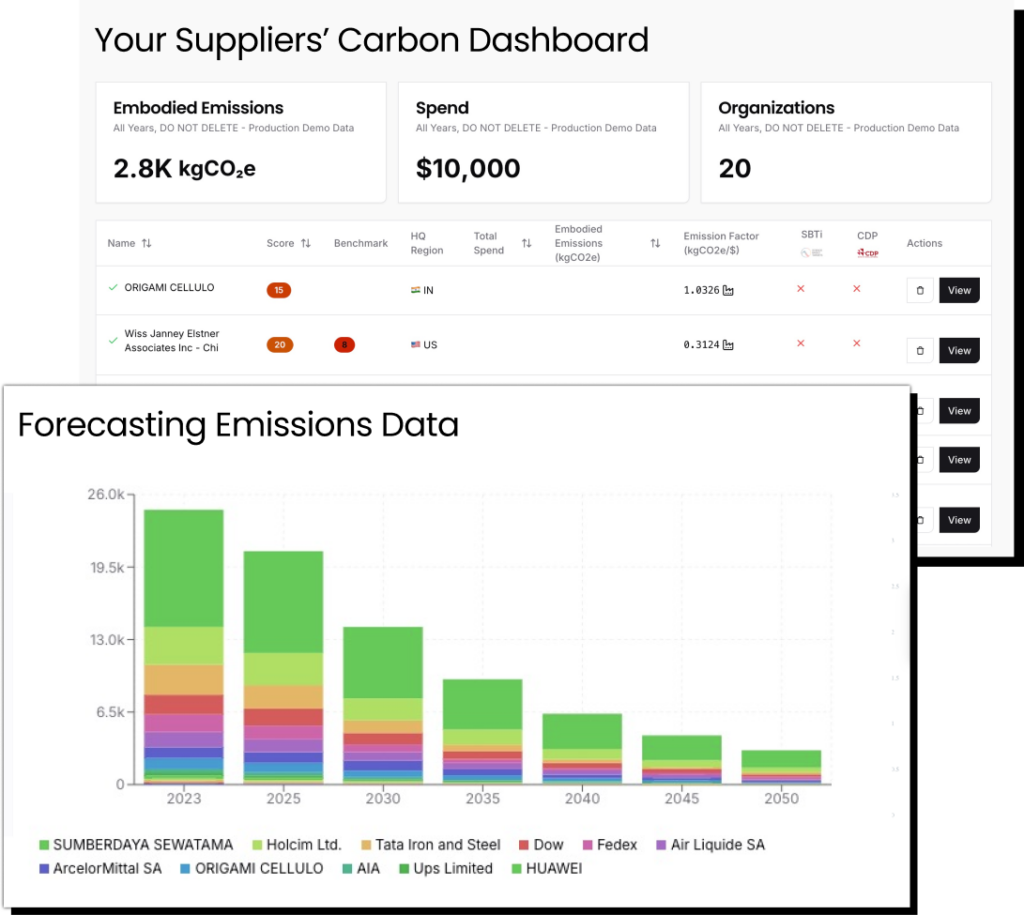Driven by governmental momentum, all businesses are rushing to make low-carbon plans. If you’ve pledged to meet your net-zero carbon targets by 2050 (or even earlier than that), you’re already on track… But that’s just the start of your race to zero.
Feeling the greenhouse gas (GHG) pressure? Have a seat and breathe out some CO2. We’re about to release some tactics that will put you ahead of your competitors.
Choosing the best climate change technologies
Everyone’s jumping on the carbon-free bandwagon. This is good in a way, as that means there’s loads of tools available out in the world.
On the downside, it’s easy to bet on the wrong horse. And you can’t afford losing time (and money) if you want to cross the net zero finish line before your rivals.
Decarbonising your supply chain is a tricky job. And before even figuring out how to reduce your scope 3 emissions, there’s a time-confusming process you need to go through: measurement.
That’s why we’ve designed a faster method to account for your supply chain carbon emissions, which typically covers most of your footprint.
Forget about costly consultants and nerdy maths for complex calculators. You just need to upload any useful data you have (such as invoices, reports, etc.) on our platform.
But you can’t realistically zero out your entire carbon footprint, so you’ll need some alternative strategies to compensate for any residual unavoidable emissions.
Sorry to disappoint you, but tree planting won’t rev up your decarbonisation. Instead of buying carbon offsets, you should spend your money on carbon removal projects such as direct air capture (DAC).
Wondering why? Well, let’s say you’ve got 1 ton of C02 left in your carbon budget. If you purchase a 1 ton offset, you’ll prevent another ton of CO2 from being released, but your initial ton of carbon is still in the ar. Rather, DAC machines would actually take that ton of CO2 out of the atmosphere. On top of that, carbon offset schemes are often ineffective and difficult to verify.Tailgating the carbon removal frontrunners
You don’t need to reinvent the renewables-powered wheel. Just learn from whoever is leading the way.
Like Microsoft, for instance. Back in 2012, the software provider giant began to tax its carbon. Thanks to this incentive, they have ditched 10 million tons of GHG since then. And this was also a way to boost the company’s triple bottom line, with a $10 million reduction in energy cost each year.
In 2020, Gates & Co. announced their plan to become carbon negative by 2030.
What are they doing to get there so quickly?
- Purchasing 100% green energy to drive down their scope 2 emissions
- Extending their carbon fee to scope 3 emissions too
- Setting aside a $1 billion Climate Innovation Fund for the advancement of carbon reduction and removal technologies
- Developing digital tools to help suppliers and customers reduce their carbon footprint
Improving your efficiency is another key element to gain competitive advantage. But we’ll let numbers speak for us.
After investing in energy efficiency solutions, Unilever slashed their total power consumption by 28%. Which translated into a 50% drop of their GHG emissions per ton of production over 10 years.
Ready to get started?
Following these directions and examples, you may see the checkered net-zero flag before your competitors.
While this will buy you precious time, it still takes some hard work on your side to become the frontrunner in your industry decarbonisation.
That’s why you should try out Ditch Carbon.
To join the climate fight, book a time to chat to us and we’ll help you get the carbon footprint of up to 250 suppliers totally free >>
